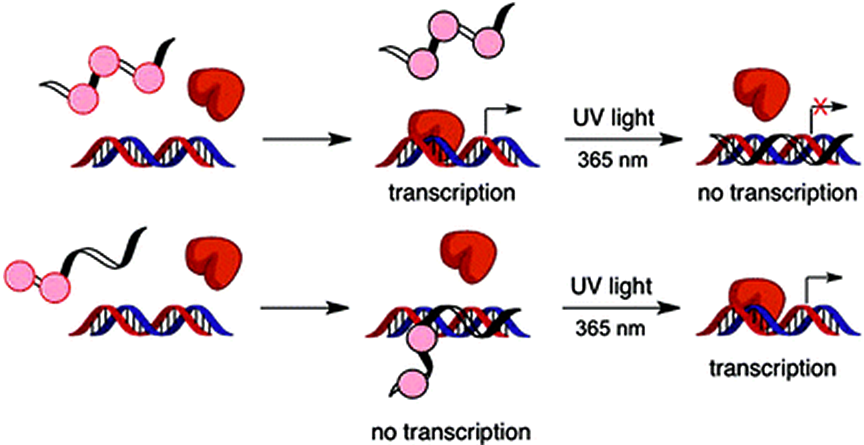Using light to switch gene expression on and off for testing therapies
May 15, 2012

Credit: A. Deiters/ACS Chemical Biology)
North Carolina State University researchers are using light-activated molecules to turn gene expression on and off. Their method enables greater precision when studying gene function, and could lead to targeted therapies for diseases like cancer.
NC State chemist Dr. Alex Deiters decided to use Triplex-forming oligonucleotides (TFOs), which are molecules that can prevent gene transcription by binding to double-stranded DNA. To more precisely control TFOs, he attached a light-activated “cage” to a TFO. After exposing TFO to ultraviolet (UV) light and removing the cage, the TFO is free to bind with DNA, inhibiting transcription of the gene of interest.
“In the absence of light, transcription activity is 100 percent,” says Deiters. “When we turn on the light, we can take it down to about 25 percent, which is a significant reduction in gene expression.”
Additionally, Deiters fine-tuned the process by attaching a caged inhibitor strand to the TFO. In the absence of UV light, the TFO behaves normally, binding to DNA and preventing gene expression. However, when exposed to UV light, the caged inhibitor activates and stops the TFO from binding with DNA, turning gene transcription on.
“We’ve created a tool that allows for the light-activation of genetic transcription,” Deiters says. “By giving researchers greater temporal and spatial control over gene expression, we’ve expanded their ability to study the behavior of particular genes in whichever environment they choose.”
Ref.: Alexander Deiters et al., Regulation of Transcription through Light-Activation and Light-Deactivation of Triplex-Forming Oligonucleotides in Mammalian Cells, ACS Chemical Biology, 2012, DOI: 10.1021/cb300161r